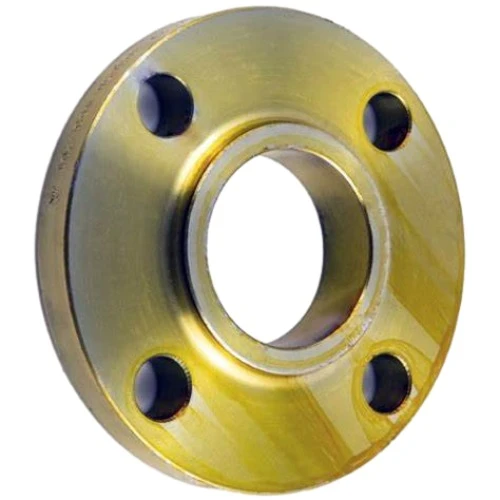-
Cangzhou Yulong Steel Co., Ltd.
-
Phone:
+86 13303177267 -
Email:
admin@ylsteelfittings.com
- English
- Arabic
- Italian
- Spanish
- Portuguese
- German
- kazakh
- Persian
- Greek
- French
- Russian
- Polish
- Thai
- Indonesian
- Vietnamese
- Zulu
- Korean
- Uzbek
- Hindi
- Serbian
- Malay
- Ukrainian
- Gujarati
- Haitian Creole
- hausa
- hawaiian
- Hebrew
- Miao
- Hungarian
- Icelandic
- igbo
- irish
- Japanese
- Javanese
- Kannada
- Khmer
- Rwandese
- Afrikaans
- Albanian
- Amharic
- Armenian
- Azerbaijani
- Basque
- Belarusian
- Bengali
- Bosnian
- Bulgarian
- Catalan
- Cebuano
- China
- China (Taiwan)
- Corsican
- Croatian
- Czech
- Danish
- Esperanto
- Estonian
- Finnish
- Frisian
- Galician
- Georgian
- Kurdish
- Kyrgyz
- Lao
- Latin
- Latvian
- Lithuanian
- Luxembourgish
- Macedonian
- Malgashi
- Malayalam
- Maltese
- Maori
- Marathi
- Mongolian
- Myanmar
- Nepali
- Norwegian
- Norwegian
- Occitan
- Pashto
- Dutch
- Punjabi
- Romanian
- Samoan
- Scottish Gaelic
- Sesotho
- Shona
- Sindhi
- Sinhala
- Slovak
- Slovenian
- Somali
- Sundanese
- Swahili
- Swedish
- Tagalog
- Tajik
- Tamil
- Tatar
- Telugu
- Turkish
- Turkmen
- Urdu
- Uighur
- Welsh
- Bantu
- Yiddish
- Yoruba

Nov . 16, 2024 02:00 Back to list
ansi b16 5 flange
Understanding ANSI B16.5 Flanges
Flanges are critical components in piping systems, serving as the connection points between two sections of pipe or between pipes and other equipment. Among various standards defining flanges, ANSI B16.5 is one of the most widely used. It specifies the dimensions, tolerances, marking, testing, and materials for flanges used in piping systems.
What is ANSI B16.5?
ANSI B16.5 is a standard developed by the American National Standards Institute (ANSI) that provides guidelines for flanged fittings that are used in high-pressure and high-temperature environments. The standard covers flange sizes ranging from 1/2 inch to 24 inches in nominal pipe size, with pressure ratings from 150 to 2500 psi. This standard is crucial for industries like oil and gas, chemical manufacturing, and power generation—where pressure containment and reliability are paramount.
Types of ANSI B16.5 Flanges
The ANSI B16
.5 standard defines several types of flanges, including1. Weld Neck Flange These flanges have a long tapered neck, which helps in aligning the flange with the pipe, providing a smooth transition for the flow of materials. They are ideal for high-pressure applications.
2. Slip-On Flange As the name suggests, these flanges slip over the pipe and are then welded in place. They are easier to align and cost-effective but are limited to lower-pressure applications.
3. Blind Flange Used to seal off the end of a pipe or a vessel, blind flanges do not have a hole in the center. They are crucial in isolating sections of a piping system.
4. Socket Weld Flange These flanges are used for smaller diameter pipes and are inserted into a socket and then welded. They are commonly utilized in high-pressure applications.
ansi b16 5 flange

5. Threaded Flange These flanges have internal threads and can be screwed onto the pipe, making installation easier in settings where welding is not an option.
Material Considerations
ANSI B16.5 flanges are typically made from a variety of materials, including carbon steel, stainless steel, and alloy steel. The choice of material depends on the operating environment, including factors such as temperature, pressure, and the type of fluids being transported. For instance, stainless steel flanges are often chosen for their corrosion resistance, making them suitable for chemical processing applications.
Design and Testing Standards
In addition to dimensional specifications, ANSI B16.5 outlines various design and testing requirements to ensure the durability and integrity of flanges. This includes hydrostatic testing, which assesses the flange's ability to withstand high-pressure conditions, and the use of appropriate gaskets to prevent leaks. The standard also stipulates the marking of flanges, which provides essential information such as material grade, pressure rating, and company identification.
Importance in Pipeline Systems
Flanges play a vital role in the integrity and safety of pipeline systems. They provide a means to easily connect and disconnect piping sections, facilitating maintenance and repairs. Moreover, the use of flanges allows for flexibility in the design of piping systems, enabling easier modifications and expansions.
The ANSI B16.5 standard is thus essential for engineers and designers in ensuring that their piping systems are constructed according to the highest safety and reliability standards. Adhering to these specifications minimizes the risk of leaks and system failures, which can result in costly downtime and environmental hazards.
Conclusion
The ANSI B16.5 flange standard is a cornerstone in the field of piping and fluid transport systems. Its comprehensive guidelines on the various types of flanges, material specifications, and testing protocols ensure that industries can create safe, efficient, and compliant piping systems. Understanding and correctly implementing ANSI B16.5 standards is crucial for professionals in sectors that rely on high-pressure piping systems, ensuring operational integrity and safety. Whether in oil and gas or in chemical processing, the benefits afforded by B16.5 flanges are undeniable, making them a fundamental component of modern engineering practices.
Latest news
-
ANSI 150P SS304 SO FLANGE
NewsFeb.14,2025
-
ASTM A333GR6 STEEL PIPE
NewsJan.20,2025
-
ANSI B16.5 WELDING NECK FLANGE
NewsJan.15,2026
-
ANSI B16.5 SLIP-ON FLANGE
NewsApr.19,2024
-
SABS 1123 FLANGE
NewsJan.15,2025
-
DIN86044 PLATE FLANGE
NewsApr.19,2024
-
DIN2527 BLIND FLANGE
NewsApr.12,2024
-
JIS B2311 Butt-Welding Fittings LR/SR 45°/90° /180°Seamless/Weld
NewsApr.23,2024











